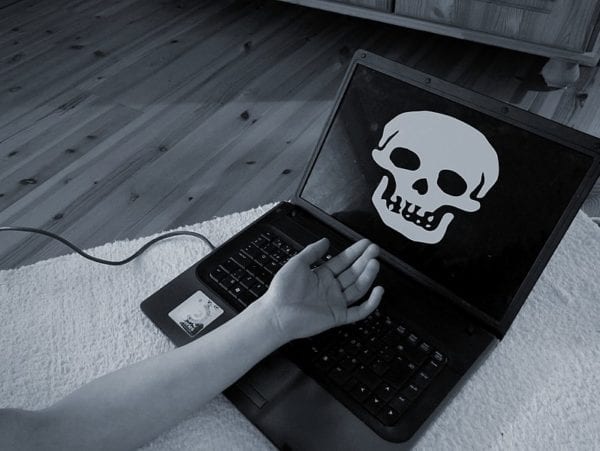
“Julie” is an outgoing 16-year-old girl in high school. She is an extrovert, but also enjoys a night in. Julie is nice and friends with everyone she interacts with. She is comfortable and outgoing in social settings. Julie is very active online. She has multiple social media accounts, including Twitter, Instagram, Snapchat, Facebook, Tumblr, and Ask.fm. She posts different content on each site and stays active with daily posts. She has hundreds of “friends” on each site and interacts with a lot of her followers daily. From an outside perspective, Julie is very popular. Despite being liked by so many, each day she receives hateful messages on her Tumblr and Ask.fm profiles from anonymous posters. Julie’s friends have confronted her about the posts, asking how anyone could hate someone as nice as her. They all read the mean public comments and read Julie’s replies; additionally, they typically sent loving messages to Julie to let her know that people do love her. Julie’s parents are unaware of the online bullying and Julie’s friends do not attempt to tell them.
Julie commits suicide three months later. Her parents contact the police, believing she committed suicide due to online bullying. The police analyze social media accounts in their investigation and discover that over 90% of the hurtful messages she received came from the same IP address as her own computer. Although there was a small chance her bully was using technical means to mimic her IP address, the authorities believe Julie was committing digital self-harm, defined by cyberbullying.org as when an individual creates an anonymous account and uses it to publicly send hurtful messages or threats to one’s self.
While “Julie” is a fictional character, this story mirrors many of the details in the tragic case of Hannah Smith. This is not an isolated or unique incident. Multiple studies on digital self-harm have been conducted to show the reasoning behind this new type of online action as well as how to help someone committing this act. A study conducted by Sameer Hinduja and Justin W. Patchin found that “nearly 6 percent of the teens reported that they had anonymously posted something mean about themselves online. Among these, about half (51.3 percent) said they did it just once, about one-third (35.5 percent) said they did it a few times, while 13.2 percent said they had done it many times” (“Study First to,” 2017). Some teens digitally self-harm for attention, the comments they receive in response, or because they are dealing with depressive thoughts. While the numbers are alarming, danah boyd discusses the many reasons why a teen may commit digital self-harm: “it is a cry for help, they want to look cool or they are seeking compliments.”
Some people feel digital self-harm is less likely to cause physical self-harm, but in Julie’s case, this was untrue. Julie left herself these comments because she was depressed and felt that this is how others feel about her. She also knew her friends would write her nice responses and they made her feel better about herself momentarily. But knowing the psychological reasons why teens would digitally self-harm is only half of the challenge. Online posting gives young adults access to a powerful channel of expression and image management, but how far should companies and parents go in making sure this channel does not turn to digital self-harm?
Discussion Questions:
- What are the ethical problems with digital self-harm? What values do you draw upon in rendering your judgment?
- Would your evaluation of digital self-harm change if you were certain it would not escalate to physical harm? Why or why not?
- What can parents or social media platforms do about this phenomena? What ethical issues might these solutions raise?
- What balance would you strike among privacy, expression, and safety in addressing the problem of digital self-harm?
- Would digital self-harm done by an adult change the ethical issues at play?
Further Information:
boyd, danah. “Digital Self-Harm and other acts of Self-Harassment.” Apophenia, December 7, 2010. Available at: http://www.zephoria.org/thoughts/archives/2010/12/07/digital-self-harm-and-other-acts-of-self-harassment.html
Digital Self Harm: The Hidden Side of Adolescent Aggression.” Cyberbullying Research Center, October 3, 2017. Available at: https://cyberbullying.org/digital-self-harm
“Study First to Examine Prevalence of ‘Digital Self-Harm in Youth with Some Startling Results.” Medical Xpress, October 30, 2017. Available at: https://medicalxpress.com/news/2017-10-prevalence-digital-self-harm-youth-startling.html
“Hannah Smith Inquest: Teenager Posted ‘Online Messages’” BBC. May 6, 2014. Available at: https://www.bbc.com/news/uk-england-leicestershire-27298627
Macey, Ashley. “This is the Most Shocking Form of Cyberbullying Affecting Teenagers.” Brit + Co, January 15, 2018. Available at: https://www.brit.co/digital-self-harm-cyberbulling-teenagers/
Authors:
Kaitlyn Pena & Scott R. Stroud, Ph.D.
Media Ethics Initiative
Center for Media Engagement
University of Texas at Austin
October 22, 2018
Image: Santeri Viinamäki / CC BY-SA 4.0
This case study can be used in unmodified PDF form for classroom or educational settings. For use in publications such as textbooks, readers, and other works, please contact the Center for Media Engagement.
Ethics Case Study © 2018 by Center for Media Engagement is licensed under CC BY-NC-SA 4.0



